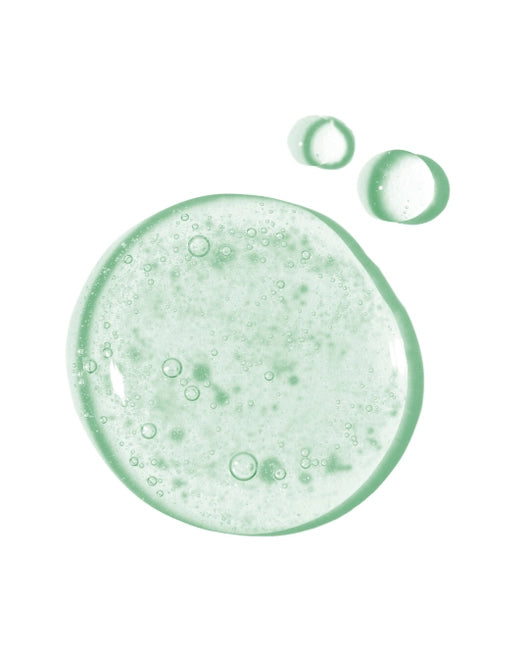
Our 'Never' Ingredient List
Harmful ingredients can be hard to steer clear of. It feels like they are lurking in everything. It can be disheartening, feeling like they are impossible to avoid. If there is one place you especially don't want them, it's in your skincare. That is why The Canopy Collective did the research, so you don't have to. No one deserves to be exposed to harmful chemicals. Below is a list of ingredients that you will never find in any of our products.
-
Aluminum Powder: Often used in cosmetics for its shimmering effect. Long-term exposure to aluminum has been linked to potential neurotoxicity and is a concern for breast cancer, though evidence is mixed.
-
BHA (Butylated Hydroxyanisole): A synthetic antioxidant used as a preservative. It can be a skin irritant and has been associated with potential endocrine disruption and carcinogenic effects in high doses.
-
BHT (Butylated Hydroxytoluene): Another synthetic antioxidant used as a preservative. It can cause skin irritation and has been linked to potential endocrine disruption and cancer risks.
-
Carbon Black: Used as a pigment. It is a known carcinogen when inhaled, and there are concerns about its potential toxicity when applied to the skin.
-
Chemical Sunscreens: Ingredients like oxybenzone and octinoxate can disrupt hormones and cause allergic reactions. They may also contribute to environmental damage, such as coral reef bleaching.
-
Coal Tar: Used in dandruff shampoos and anti-itch treatments. It is a known carcinogen and can cause skin irritation and other health issues.
-
Cyclic Silicones: Used for their smoothing properties. They can be harmful to aquatic life and may accumulate in the environment, raising ecological concerns.
-
Dibutyl and Diethylhexyl Phthalates: Used as plasticizers. They can disrupt hormones and have been linked to reproductive issues and developmental problems.
-
EDTA (Ethylenediaminetetraacetic acid): A chelating agent. It can be an irritant and has environmental concerns due to its persistence and potential to disrupt ecosystems.
-
Ethanolamines (MEA, DEA, TEA): Used as pH adjusters and emulsifiers. They can be irritants and have been associated with potential cancer risks when used in high concentrations.
-
Formaldehyde: A preservative and disinfectant. It is a known carcinogen and can cause allergic reactions, skin irritation, and respiratory issues.
-
Fragrance or Parfum: Potential allergens and hormone disruptors. Companies do not have to disclose what is in their fragrance, meaning they may contain phthalates, synthetic musks, and allergens, which can have harmful effects on health. Some fragrance ingredients, like styrene and benzophenone, are linked to neurotoxicity, organ damage, and even cancer with prolonged exposure.
-
Heavy Metals: Includes lead, mercury, and others. These can accumulate in the body and are linked to various health issues, including neurological and developmental damage.
-
Hydroquinone: Used for skin lightening. It can cause skin irritation, and long-term use may be associated with potential carcinogenic effects.
-
Isobutyl and Isopropyl Parabens: Preservatives used to prevent bacterial growth. They can disrupt hormones and have been linked to potential breast cancer.
-
Lead and Lead Compounds: Used in some pigments. Lead is a neurotoxin that can cause developmental and cognitive issues, especially in children.
-
Mercury: Used in some skin-lightening products. It is highly toxic and can cause neurological and kidney damage.
-
Methyl Cellosolve or 2-Methoxyethanol: Solvents that can be skin irritants and have potential reproductive and developmental toxicity.
-
Methylchloroisothiazolinone and Methylisothiazolinone: Preservatives that can cause allergic reactions and skin sensitivities, including contact dermatitis.
-
Methylene Glycol: A formaldehyde-releasing preservative. It can be a skin irritant and is linked to cancer risks.
-
Nitromusks and Polycyclic Musks: Fragrance ingredients that can accumulate in the body and have been linked to endocrine disruption and potential carcinogenic effects.
-
Octinoxate: A chemical sunscreen that can cause skin irritation and has been linked to hormone disruption.
-
Oxybenzone: Another chemical sunscreen ingredient that may cause allergic reactions and hormone disruption. It is also concerning for its environmental impact.
-
Parabens: Preservatives used to extend shelf life. They can disrupt hormones and have been linked to breast cancer concerns.
-
Paraformaldehyde: A formaldehyde-releasing agent. It can cause skin irritation and is a known carcinogen.
-
Petrolatum: Can cause hormone disruption, is derived from oil and is not biodegradable, and may be contaminated with harmful byproducts.
-
PFAS or PFCs (Perfluorinated Compounds): Used for their water- and oil-repellent properties. They can accumulate in the body and have been linked to various health issues, including cancer.
-
Phthalates: Plasticizers used for flexibility. They are hormone disruptors and have been associated with reproductive and developmental problems.
-
Polyacrylamide: A thickening agent that can form acrylamide, a possible carcinogen, under certain conditions.
-
Quaternium 15: A preservative that releases formaldehyde. It can cause skin irritation and allergic reactions.
-
Resorcinol: Used in hair dyes and acne treatments. It can be a skin irritant and has potential endocrine disruption effects.
-
Sulfates (SLS & SLES): Typically found in foaming agents and cleansers, sulfates can strip natural oils and cause irritation. They are also not biodegradable and cause pollution to waterways when washed down the drain.
-
Sulisobenzone: A sunscreen agent that can cause skin irritation and has potential hormone-disrupting effects.
-
Synthetic Musks: Fragrance compounds that can accumulate in the body and are linked to hormone disruption.
-
Toluene: A solvent that can cause skin irritation and has potential reproductive and developmental toxicity.
-
Triclosan: An antibacterial agent that can cause skin irritation and has potential endocrine-disrupting effects.
- Vinyl Chloride: Used in some plastic products. It is a known carcinogen and can cause liver and neurological damage.
